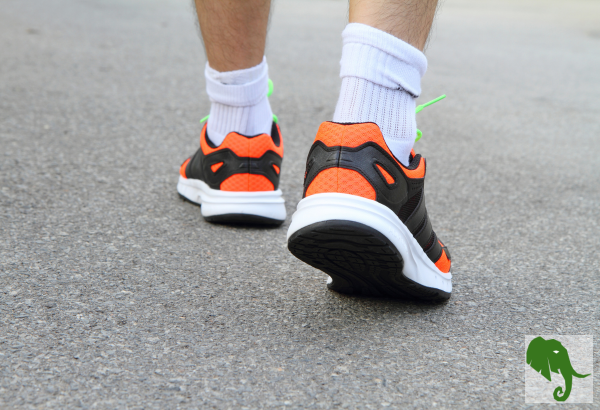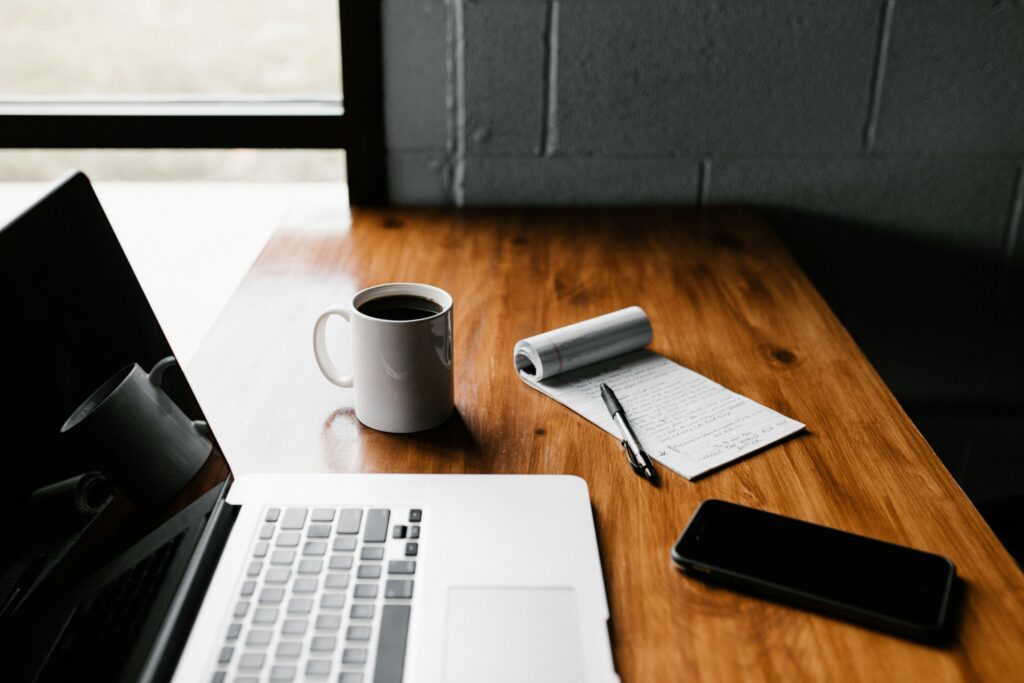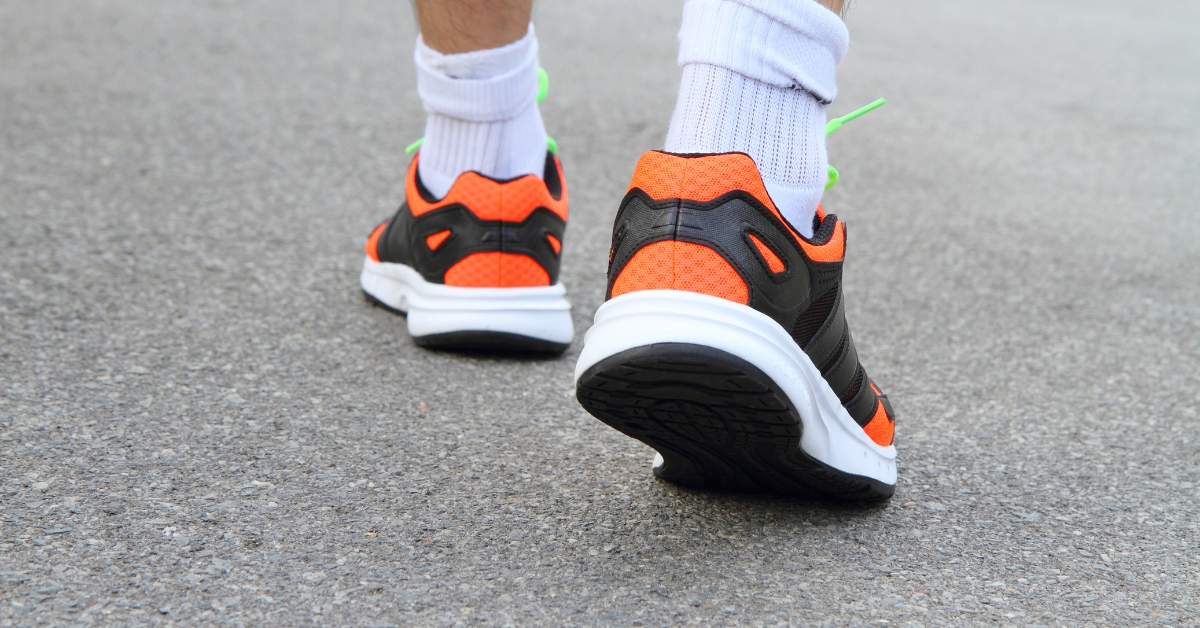
Recently, I started walking again. I say ‘again’ though the last time I did any related movement was when I was jogging regularly, about 6 years ago. These days I am just walking. Of course, my ‘walking’ may be considered by some to be more like power walking though I would describe it more as walking-with-purpose-while-getting-on-down-the-road walking. After all, I am trying to get my calorie-burning exercise on and not take half a day doing it. Regardless, I certainly take into consideration my safety while I am out walking (or when I was running more regularly).
Because I am going out onto public and very busy roads, I always think about safety when walking. I am sharing some things I do myself as well as some others you may want to consider for yourself, you too can prioritize your safety when out walking or running. The things I talk about are in no particular order; but I suspect you can prioritize them based on your own needs and scenarios you find yourself in.
I also have to let you know that the shoes I walk in are not near as sexy as those bright orange with fluorescent green laces shown in the pictures above, not to mention those white socks. I cannot compete.
Getting Ready to Go
Everyday when I get ready to walk I go through the same ritual. I get my house key, my phone, the watch I plan to wear, and my ‘tools.’ I definitely prioritize my safety when I go for a walk (or when I was running regularly).
Additionally, I drink some more water as I do not carry any with me. Plus, I have already had water by that point anyway (more on this below).
Of course, I get dressed in my walking clothes and get my socks and shoes on.
On a sidebar note, I would say to be sure to get yourself a good pair of shoes, in the right size, for walking. A bad pair will mess up your feet in a hurry.
Tools of Choice
When I say ‘tools’ what I mean to say is weapons of choice. Of course, in writing this, I still prefer ‘tools.’
I have carried a firearm when I am out on a walk or a jog. Generally, it necessitates a waist band or similar (I have never been a fan of appendix carry in jogging shorts.). More recently though, I have chosen to walk with both pepper spray and a blade. Just my choice. You may find other options, including a firearm, for yourself. As for me, there may times I prefer a firearm; but for now, I am good with what I have opted to carry.
Regardless of what I carry and why, you need to find what works for you in your scenarios and what you prefer. Just make it a thought-through choice for you with tools you actually know how to use. You do not want to have to figure out the safety mechanism on your pepper spray or how to aim it when you actually are needing to use it, for example. Some type of tool(s) can help make you safer when out for that walk or run.
Means of Communication and ID
Perhaps you like carrying your ID with you or maybe your smartphone, after all we tend to have most everything saved in it.
I used to make it a point to take my driver’s license out of my wallet and carry it in my pocket on runs. Lately, I have been carrying just my smartphone. Which is right? I could go either way or both; but I feel like I would rather have my smartphone. If something were to happen, at least I can call for help. Other times, for weight alone, I feel like I should maybe only carry my driver’s license. Plus, if I got robbed, I would likely have to give up my phone. Not good!
Again, this is something you have to decide for yourself and only you can make that decision. Like so many things, every choice comes with pros and cons.
Communicating
Friends and Family
If you have friends, family, or a significant other, consider letting them know where you will be and when. Sure. You are the type not to have to answer to anyone; but that is not what this is about. This is about letting others, close to you, know your plans so if something happens and you are not back in a reasonable amount of time, they know where to start looking.
It enables them to have some idea of where you went and the time you were planning on, especially after dark. Bad things rarely happen; but it sure would be nice if you let those that care about you know your plans, so they can help or get help should the need arise. It might just make them feel a little better about you being out on your own too.
Encountering Others While Out
If you happen to be in a highly trafficked area, meaning others are out on the same course you are, whether walking or running, I believe it is a good idea to acknowledge them and let them know you see them.
Why? Because you do not want to come off as being someone oblivious or not paying attention.
You do not have to strike up a conversation; but I contend it is always a good idea to either make brief eye contact and/or say ‘hello,’ ‘good morning,’ or similar. That way they know you have seen them even if they are not of the same mindset. It lets them know that you are paying attention and are aware of them, if nothing else.
I also usually say ‘hello’ or ‘morning’ when I am approaching someone from behind. I do this in an effort to try and let them know I am coming up on them, so maybe I will not startle them as much when I do come up and pass them. Plus, I want them to know I am there and not just trying to sneak up on them.
What Side of the Road
I would not have thought this topic was one I needed to touch on. Apparently, I was wrong.
I learned very young that you walk, jog, run against traffic; and you ride bikes with traffic. This safety messaging has likely not been provided to a lot of folks alongside the road today.
Why walk, jog, run against traffic? I think the idea is so you face oncoming traffic and are maybe able to make eye contact along the way, better ensuring drivers see you. I know I feel more comfortable looking at oncoming traffic and even making eye contact or waving at a driver from time to time. Some drivers even wave at me first. Plus, if I see something coming, I might be able to get out of the way easier versus if it is coming up behind me and I do not see it in time.
The challenge is that sidewalks may only be on one side of the road, so you may wind up walking or running with traffic for at least part of your journey unless you make it a point to go down the opposite side of the road. How many folks opt not to use a sidewalk? Not many, I suspect.
Try to walk or run against traffic and plan routes that allow you to do so for the majority of your planned route. At least try to minimize the time you spend walking or running with your back against oncoming traffic. I don’t know about you; but I am not a big fan of having things come up behind me and me not seeing or knowing what they are.
Consider Groups
For another safety measure, especially if you are walking or running in a bad part of town or in the dark, try to go with friends or in a group. The old adage that there is safety in numbers is still true. You are generally safer in groups. Bad guys like easy targets and when you are alone, you can be seen as an easier target.
Situational Awareness
Paying Attention, Staying Alert
I will never understand folks that never look up from their smartphone or are listening to whatever with their headsets or earbuds. Situational awareness, or simply paying attention to what is going on around you, is paramount when out and about in public. Walking or running are certainly no exception for practicing good situational awareness. For the love of whatever, pay attention to what is going on around you when you are not at home! Try to think at least a little about your own safety while you are our walking or running.
Listening
Your hearing plays a critical role in your ability to pay attention to your surroundings and stay alert, especially when near a road. Your hearing enables you to be alerted to both vehicles and people approaching, as long as it is not blocked.
I know a lot of us enjoy music when we are out; but consider not wearing headphones or earbuds when out walking or jogging. If you do opt for earbuds, consider wearing only one so you have at least one good ear for hearing your surroundings. You can also consider bone conduction headphones as an option allowing you to still hear your environment.
Additionally, think about not pulling that hoodie up over you head. It blocks most any sound coming from behind you. If it happens to be raining and you need to wear a hoodie, be sure to look behind you more frequently while out on your route to better avoid being caught offguard.
Looking
Of course, looking both ways before crossing goes without saying (at least, I hope); but there are a few other items to consider as well.
Before crossing an intersection or a crossroad, look ahead for oncoming traffic that may be getting ready to turn across the front of you. Look for traffic coming up the road you are crossing. And last but not least, look over your shoulder to see if traffic is coming up from behind you getting ready to turn into where you are crossing, as you are getting ready to cross.
If you like being on park trails, note when you maybe passing into a wooded area, so you know you need to be looking around a bit more than you do out in the open.
Whether there is traffic or not, make it a point to look behind you occasionally so you are not caught off-guard or surprised by vehicles or people that may be coming up behind you. I have had joggers come up from seemingly nowhere; and I have had vehicles slowly approaching in the right-hand turning lane behind me, waiting for me to cross the street they are wanting to make a right onto. If I had not looked, they would have all caught me 100% off-guard. Not ideal, so get into the habit of looking.
If you do nothing else… Keep your faces out of those phones, especially when crossing those streets!
What to Do If…
First, if your intuition tells you to avoid something or not to go towards something, listen to it. If you see something you do not feel good about or that is concerning to you, avoid it. Turn around and head back. Head to a public space, to a neighbor’s house, just listen to what your gut is saying.
If you think you are being followed, do not go home. Go to a public space (well-lit, if after dark), a fire or police station, or a neighbors house.
If a vehicle comes up behind or beside you, cross the street and head the opposite way. Then head to a public space, a fire or police station, or a neighbor’s house.
Learn verbal deescalation skills to be able to work yourself out of some situations you may find yourself in. Deescalation is a skill and while there is no magic bullet, it is a skill that can serve you well.
And remember too, there is nothing wrong with being rude or lying if you are approached and asked questions or feel pressured to provide information to a perfectly good stranger. Your safety comes first!
Of course, call 911 if you feel like you are really in trouble. And there is no shame in going to a stranger’s house if you need to and asking for help.
Changing Things Up
The short? Do not take the same routes all the time and do not go at the same times. Switch things up.
You do not want to give anyone a schedule they can use to follow or find you when you are out. Sure over time they might be able to figure out your routine; but it will be more difficult if you are constantly changing it up.
Be as unpredictable as possible. Your overarching goal is to be as hard of a target as possible, not an easy one.
Dusk/Dark/Dawn
When it is dark, getting dark, or starting to get light, decide if you really need to go at these times. In the warmer months, it likely will start cooling off in the evenings or be cool early in the mornings. Prioritize your safety first, especially if you happen to live in a rougher neighborhood, or if your routes take you into questionable areas. Of course, you should look to change your routes if you find yourself in less savory parts of town.
If you are going to go out into the darkness, consider a high visibility vest, reflective armband or a flashlight. Personally, I like a vest, as some give you more pockets. I have seen some folks walking with flashlights shining it on the ground out in front of them. This just means you would have something in one hand all the time. Of course, you can use a flashlight as an impact tool as well (an improvised weapon) should the need arise.
Again, consider the options and decide on those that work best for you. Just avoid dressing in all dark colors with no visibility options if you do go out in the dark.
Do not expect others to be on the lookout for you. You look after you. Make yourself as visible as possible. It is on you.
Drinking Water
Drink water, even if you are not thirsty yet. Ideally, the goal should be to at least drink water before you embark on your journey and after. If it is super hot or you are looking to go long distances, carrying and drinking water while you are out is also advisable.
Generally speaking, depending on your level of activity, age, body weight, etc., you should drink between ~2-4 liters of water everyday (a liter is a bit more than a quart). Sounds like a lot? It really is not, once you are in the habit. Of course, if you usually do not drink much water, you may think the suggested amounts are too much. There and again, you may even find yourself drinking more than the recommended amounts. I tend to drink 2-4 quarts daily and sometimes 5-6, depending on my volume of activity and the heat.
If you happen to be getting up there in years, you are working out, or you are out in the heat, you need to be drinking more water. And again, waiting until you are thirsty is not the time to be drinking. You need to be charging up with water, drinking as needed during activity, and then finishing up with water to best support your body’s needs and to avoid nasty things like heat exhaustion or heat stroke (during the warmer months) or general dehydration.
It is hard to drink too much water; but you can, so like everything else, keep it in check. Just know most people do not drink enough water, so they may think you are drinking too much. Ignore them. You need to stay properly hydrated.
Conclusion
If you are out in public, you need to be paying attention to your surroundings and taking some basic safety precautions for yourself. This holds true when you are out on the roads when walking, jogging, or running. Consider the tips provided here to help you be safer and better prepared when you are out and about while prioritizing your health. Good job!
Related Content

Staying Safe in the Heat: Identify, Treat, Prevent
As we progress through the summer months, many regions worldwide, including the United States, are experiencing record heat temperatures. Despite the heat, many of us find ourselves …

Read other OwnGuard Solutions blog posts
Read our other posts centered around being safer and better prepared.

